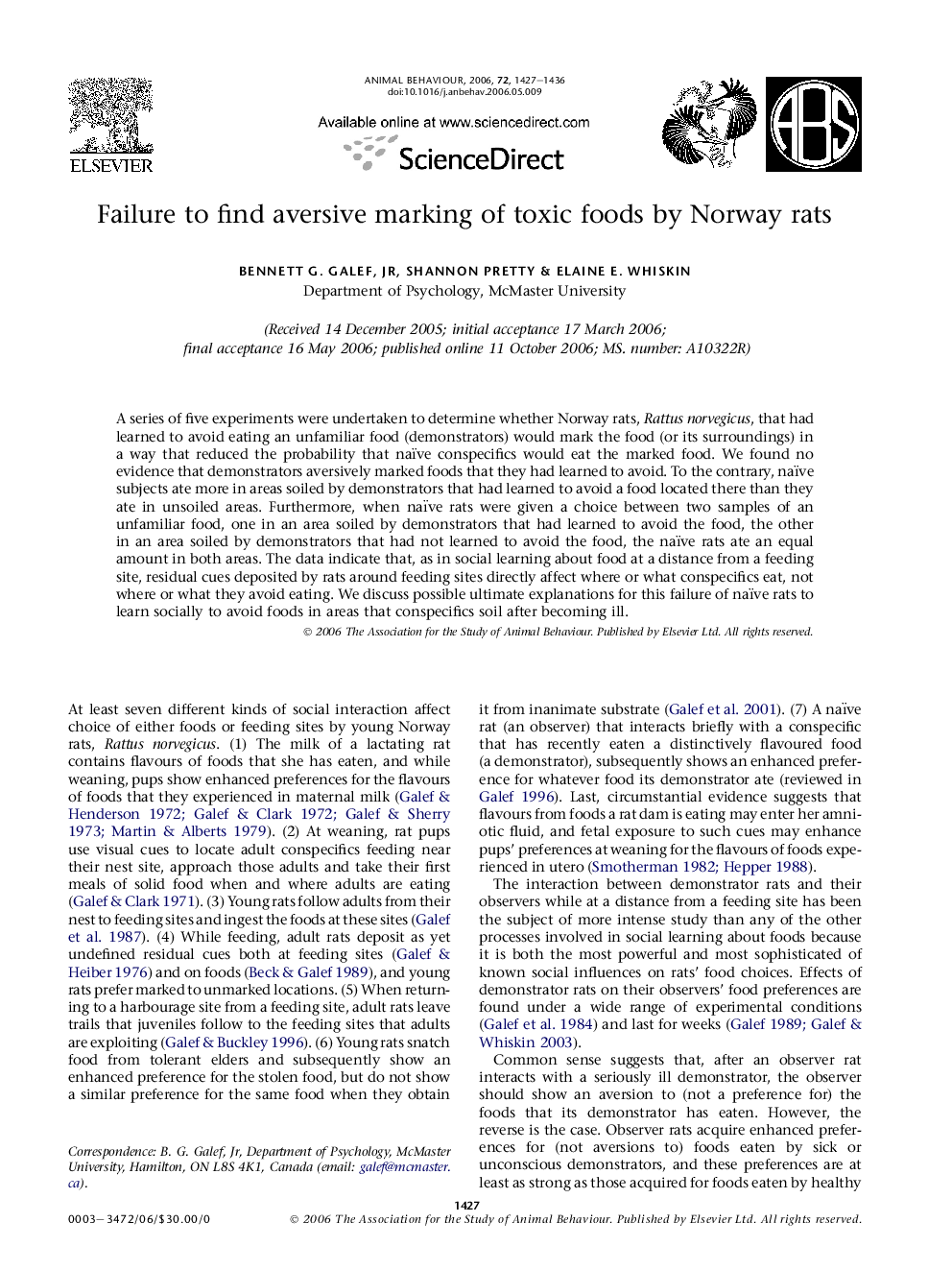| Article ID | Journal | Published Year | Pages | File Type |
|---|---|---|---|---|
| 2418472 | Animal Behaviour | 2006 | 10 Pages |
A series of five experiments were undertaken to determine whether Norway rats, Rattus norvegicus, that had learned to avoid eating an unfamiliar food (demonstrators) would mark the food (or its surroundings) in a way that reduced the probability that naïve conspecifics would eat the marked food. We found no evidence that demonstrators aversively marked foods that they had learned to avoid. To the contrary, naïve subjects ate more in areas soiled by demonstrators that had learned to avoid a food located there than they ate in unsoiled areas. Furthermore, when naïve rats were given a choice between two samples of an unfamiliar food, one in an area soiled by demonstrators that had learned to avoid the food, the other in an area soiled by demonstrators that had not learned to avoid the food, the naïve rats ate an equal amount in both areas. The data indicate that, as in social learning about food at a distance from a feeding site, residual cues deposited by rats around feeding sites directly affect where or what conspecifics eat, not where or what they avoid eating. We discuss possible ultimate explanations for this failure of naïve rats to learn socially to avoid foods in areas that conspecifics soil after becoming ill.
